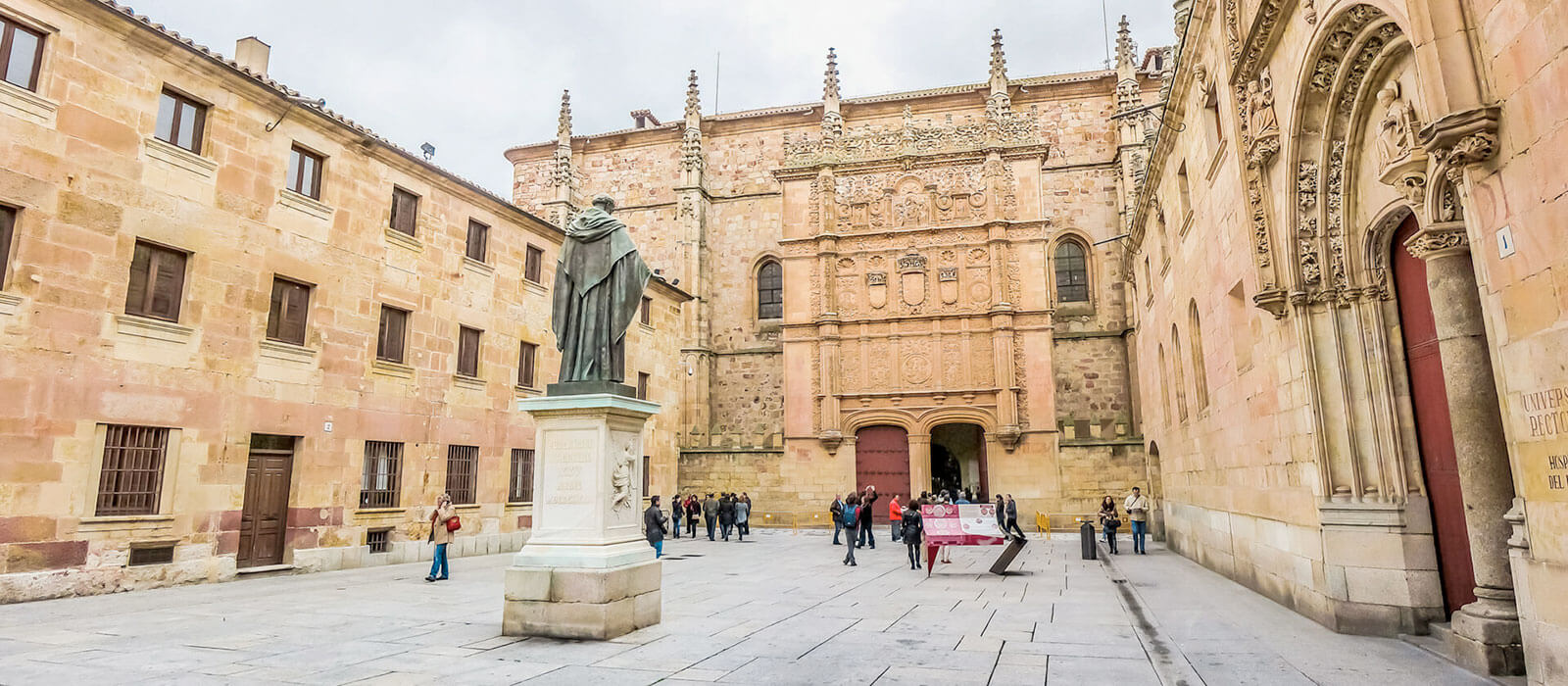Courses in Spain for Brazilians | Courses for adults
Courses in Spain for Brazilians. Improve your Spanish with our courses in Spain for Brazilians. Join don Quijote and take a course for adults in Spain.

In an increasingly globalized world, mastering several languages has become an essential tool for improving professional, academic, and personal opportunities. Among the most widely spoken and relevant languages internationally is Spanish, with more than 500 million speakers worldwide. For this reason, courses in Spain for Brazilians have become a highly sought-after option for those looking to broaden their horizons and immerse themselves in new cultures.
Throughout this text, we will explore the advantages of studying Spanish in Spain and the most recommended cities for doing so.
Advantages of courses in Spain for Brazilians
Choosing Spanish as a second language is a sure bet. And if you want a destination to master it completely, there is nothing better than taking courses in Spain for Brazilians. These programs offer you an amazing immersive experience in the cradle of the language. Being in constant contact with native speakers speeds up the learning process.
In addition, in Spain you will find a wide range of cities where don Quijote has schools to help you improve your Spanish, with programs designed specifically for foreigners.
Here are 10 clear advantages of courses in Spain for Brazilians:
- Total immersion in the language. Studying in an environment where Spanish is spoken daily accelerates comprehension and fluency.
- Learning with native speakers. You will be able to familiarize yourself with and discover new expressions, authentic phrases, different accents, and correct intonation from the very beginning.
- Variety of cities. Don Quijote has a wide range of accredited Spanish schools and programs tailored to foreigners. Courses in Spain for Brazilians will help you improve your level, meet new people, and enjoy a unique stay.
- Enriching cultural experience. Living in Spain allows you to learn about its traditions, festivities, cuisine, and historical heritage.
- Linguistic proximity. The similarity between Portuguese and Spanish makes it easier for Brazilians to learn Spanish, especially at beginner levels.
- Complementary activities. Many of our courses in Spain for Brazilians include excursions, workshops, and cultural events that reinforce the language in a practical way.
- International atmosphere. At our schools, you will find students from all over the world, so you will experience a multicultural and very rich environment. You can make friends from countries such as the United States, France, Germany, the United Arab Emirates, and China, among others.
- Attractive lifestyle. The climate, cuisine, and quality of life make Spain a pleasant place to live while studying.
- Variety of destinations. From big cities like Madrid and Barcelona to historic places like Salamanca and Granada, there are options for all tastes. Discover our destinations for learning Spanish in Spain.
- Academic and professional advantages. Mastering Spanish will open doors for you in multinational companies, universities, and international organizations around the world.
In addition to all these advantages, there is the possibility of combining language learning with cultural exploration. Spain's rich history, cuisine, and traditions enrich the student experience. Many courses in Spain for Brazilians include complementary activities such as guided tours, cooking workshops, or flamenco classes, which allow for a more complete integration.
Another important factor is the similarity between Portuguese and Spanish, which makes learning easier for Brazilians. However, studying in a Spanish-speaking country allows you to identify nuances, improve your pronunciation, and use vocabulary naturally and accurately.
Thus, courses in Spain for Brazilians represent a smart investment in an interconnected world. Spain offers unique opportunities to learn the language from an authentic perspective, with direct access to local culture, customs, and expressions.
The important thing is to take the first step towards learning Spanish, a language that opens doors on five continents and allows you to connect with millions of people. Whether strolling through the streets of Salamanca, exploring the historic neighborhoods of Seville, or enjoying a paella in Valencia, courses in Spain for Brazilians offer much more than grammar; they offer a transformative life experience.
Spanish courses for adults
Want to sign up for a Spanish course for adults, but don't know where to start? If you're an adult living in France and thinking about continuing your Spanish education, you've come to the right place! More and more people are deciding to take Spanish courses for adults in Spain for academic or professional reasons, but also for pleasure, personal growth, and to learn another language.
But it's normal to have questions before making this decision. How long does it take to speak fluently? What is the best destination? Is it too late to learn a language? In this article, don Quijote answers all these questions to help you plan your language trip to Spain with confidence and enthusiasm.
Why choose Spanish courses for adults?
Dedicating your time to traveling to another country to learn a language is a challenge, but you are not alone. Spanish is one of the most widely spoken languages in the world, and more people are deciding to learn it.
Here are some reasons why you should take a Spanish course for adults:
- Total immersion in the language. Learning Spanish in Spain allows you to be surrounded by the language 24 hours a day. This greatly accelerates your learning, as you not only practice in class, but also when ordering a coffee, buying a sandwich, or simply chatting with locals.
- Specialized teaching for adults. Spanish courses for adults are designed specifically for those who are not of school age. The methodologies are practical, respectful of individual pace, and focused on real communication. Many programs include specific topics for adults, such as culture, business, art, history, or gastronomy.
- Motivating and cultural environments. Spain is a place full of history, traditions, art, architecture, and good weather. Improving your Spanish while exploring cities such as Madrid, Seville, or Salamanca makes the experience much more enriching.
- Convenience for European travelers. As a French citizen, traveling to Spain is easy, fast, and inexpensive. You don't need a visa, and you can go by plane, train, or even car. In addition, the cost of living in many Spanish cities is more affordable than in France.
- Cultural immersion. It's not just about learning a language but about having a unique experience full of culture and history. Spain has a great cultural variety that you can discover in the city of your choice, see the contrasts with your own way of life, and explore unimaginable places.
Additional advantages of Spanish courses for adults:
- International atmosphere: you will meet students your age from all over the world.
- Networking: you'll make lifelong friends, even professional contacts and travel companions to discover many places with.
- Personal confidence: speaking another language opens doors, gives you confidence and allows you to see the world through different eyes.
- Professional development: Spanish is useful in many careers, from tourism to business and international relations.
How long do Spanish courses for adults last?
The answer is: it depends. There are many factors that can influence your decision, such as your starting level, your motivation, the number of hours per week you want to study, and the environment you find yourself in.
To reach a basic functional level (A2-B1), many adults need between 6 and 12 weeks of intensive Spanish courses. To reach an upper intermediate level (B2), where you can hold conversations fluently and understand the media, we recommend between 3 and 6 months of study with constant practice. And to reach an advanced level (C1-C2), it can take between 6 months and a year, depending on the intensity of the course and the degree of immersion.
But don't worry, there's no rush. The important thing to remember is that Spanish courses for adults allow you to progress at your own pace, are very flexible, and offer ongoing support. You'll meet many other people in the same situation as you, who you can lean on and with whom you'll share a unique and unforgettable adventure.
Recommended destinations in Spain
Spain has many cities that are ideal for studying the language, each with its own charm. Here are some of our favorites for Spanish courses for adults:
Salamanca. Considered the cradle of Spanish, it is a university city with a long tradition of language teaching. Quiet, welcoming, and full of history, Salamanca offers an authentic and academic experience. Known as “the city of pure Spanish,” Salamanca is home to one of the oldest universities in Europe. Its student atmosphere and reputation make it the ideal place to learn the language. An excellent option for courses in Spain for Brazilians.
Madrid. The capital is perfect for those looking to combine study with urban and cultural life. There are many quality schools, museums, theaters, events, and a wide variety of activities. You'll never be bored in Madrid. It is a multicultural center that offers a huge variety of places and shows in Spanish for complete immersion. Studying Spanish in Madrid allows you to live in a vibrant city with a wide range of cultural and leisure activities, ideal for international students.
Seville. Ideal for enjoying the Andalusian character, flamenco music, and warm weather. Spanish courses for adults in Seville often include cultural activities, guided tours, and cooking workshops.
Barcelona. Modern and multicultural, it is attractive to those who want to learn in a dynamic environment. Although Catalan is also spoken, Spanish is present in all areas. With its mix of modernity and tradition, Barcelona is another popular destination. There you can find courses in Spain for Brazilians that also include an introduction to Catalan culture, adding extra value to the experience. Our Spanish school in Barcelona is a new premium boutique school in the city center, close to many places of interest and iconic buildings.
Valencia. With a lower cost of living than Madrid or Barcelona, in Valencia you will enjoy good weather, good food, and quality schools to improve your Spanish. It offers good weather, beaches, and a wide range of cultural activities. It is one of the most popular destinations for students from all over the world who want to combine language study with an enjoyable life experience.
Malaga. An excellent option for combining sea, sun, and study. The Spanish schools have a very good reputation for helping you master the language during your stay, practice, and get to know a charming and lively city.
Granada. This Andalusian city combines history, culture, and a more affordable cost of living. Courses in Spain for Brazilians in Granada tend to focus on personalized teaching in small groups, ideal for those seeking intensive learning.
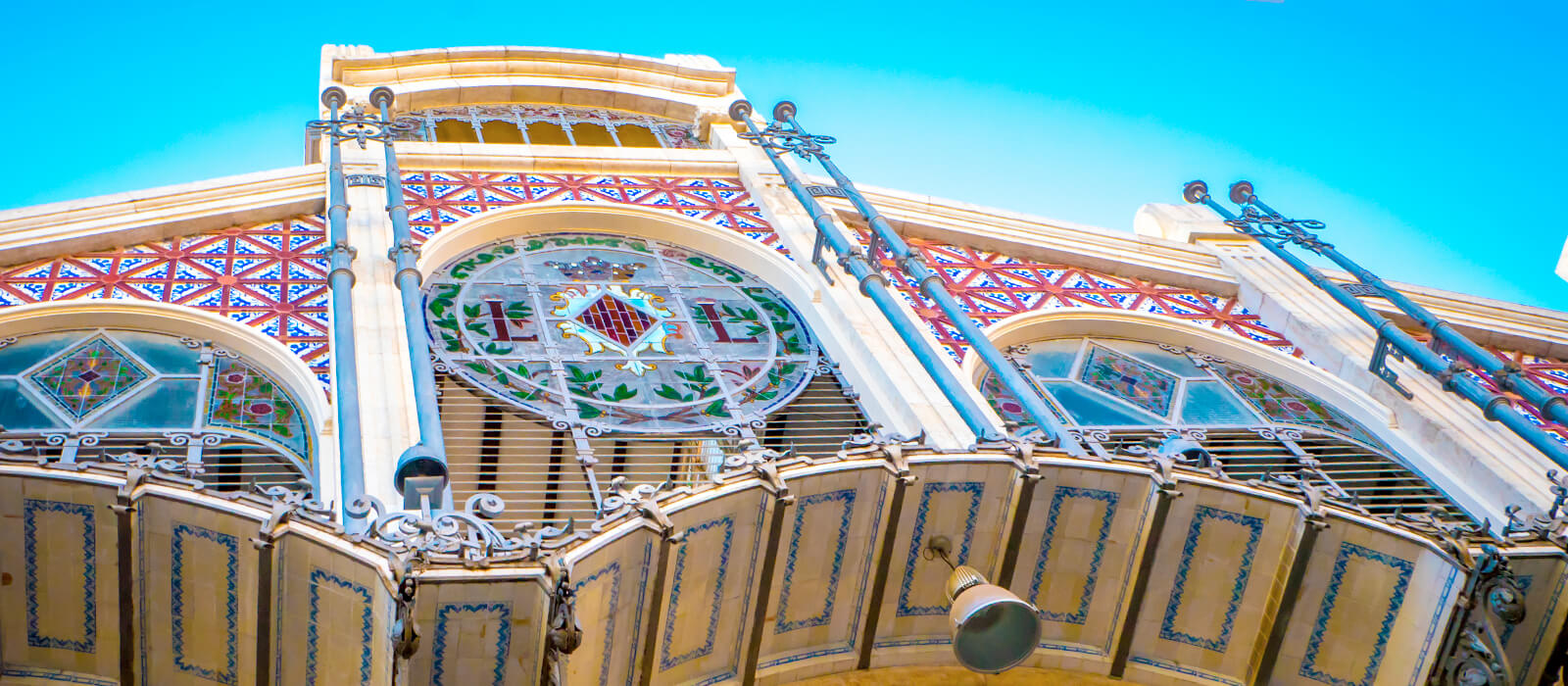
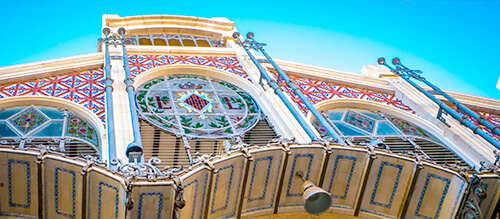



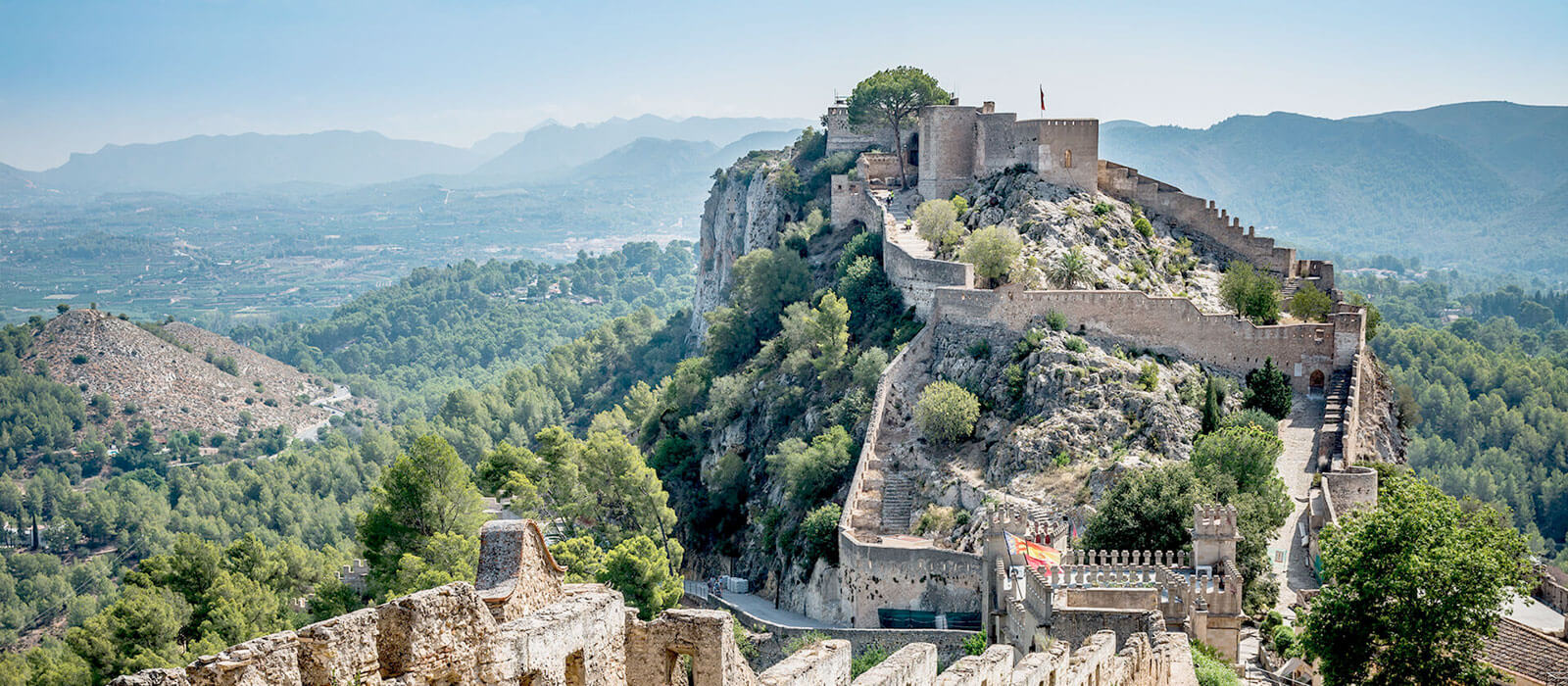






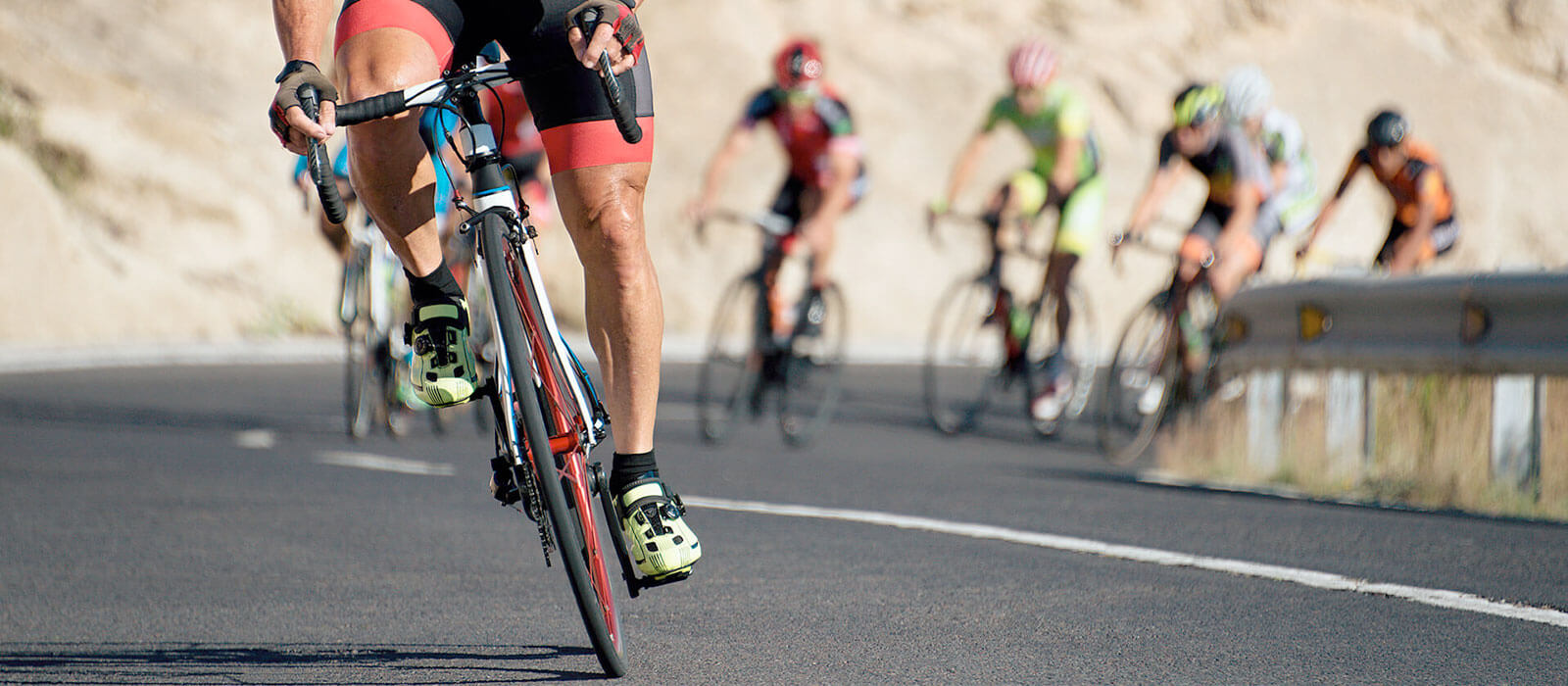
 1. Rock n' Roll Madrid - Athletics (April)
1. Rock n' Roll Madrid - Athletics (April) 2. Open de España - Golf (April/May)
2. Open de España - Golf (April/May) 3. The Mutua Madrid Open - Tennis (May)
3. The Mutua Madrid Open - Tennis (May) 4. Spanish Formula 1 Grand Prix - Auto racing (May)
4. Spanish Formula 1 Grand Prix - Auto racing (May) 5. Red Bull X-Fighters International Frestyle Motocross - Motocross (July)
5. Red Bull X-Fighters International Frestyle Motocross - Motocross (July) 6. Descenso del Sella - canoeing (August)
6. Descenso del Sella - canoeing (August) 7. Vuelta a España - Cycling (August - September)
7. Vuelta a España - Cycling (August - September) 8. 2014 FIBA World Cup - Basketball (August 30 - September 2014)
8. 2014 FIBA World Cup - Basketball (August 30 - September 2014) 9. La Liga - Football (August - May)
9. La Liga - Football (August - May) 10. 2014 ISAF World Championships - Sailing (September)
10. 2014 ISAF World Championships - Sailing (September)
